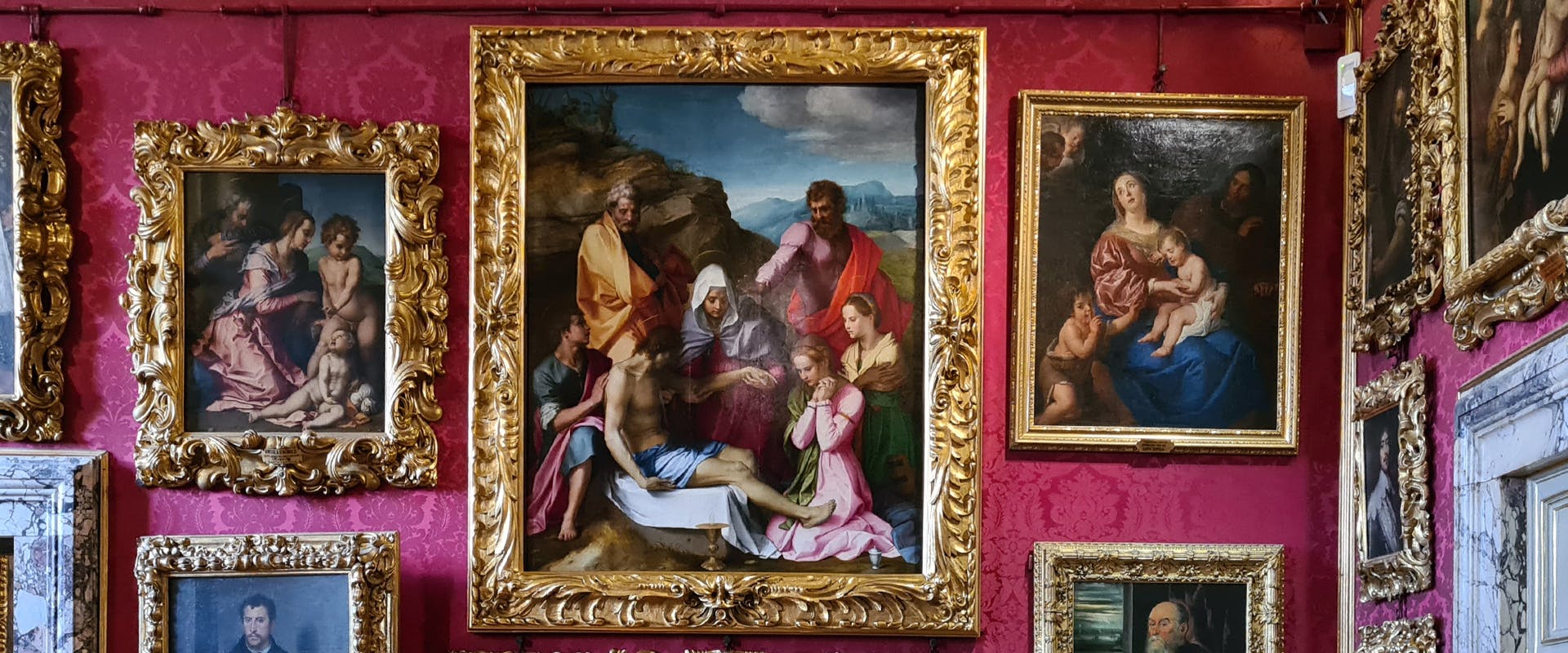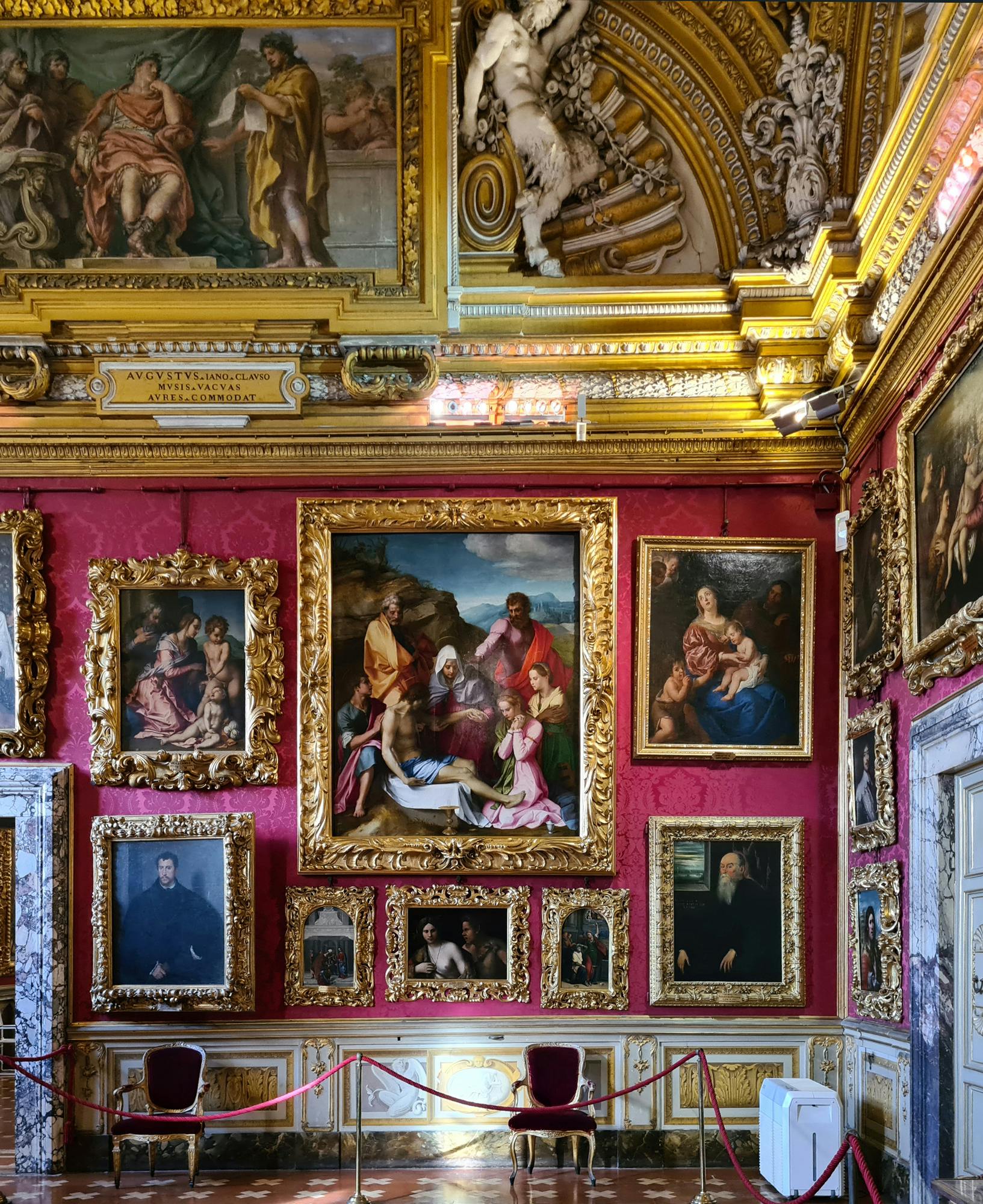Andrea del Sarto's masterpiece "Pietà di Luco" back in Pitti Palace
After a masterful restoration carried out by the Opificio delle Pietre Dure
The dazzling colours of the "Pietà di Luco" return to shine in the Sala di Apollo of the Palatina Gallery after the restoration carried out by the Opificio delle Pietre Dure, Florence. This masterpiece by Andrea del Sarto was executed between 1523 and 1524. It has been relocated to its place within the mid-17th-century Baroque frame that Grand Prince Ferdinando chose for it. The work owes its name to the Camaldolese monastery of San Pietro in Luco del Mugello, where the painter worked for the nuns. According to Giorgio Vasari, the altarpiece was commissioned by the abbess of the monastery, the Florentine noblewoman Caterina di Tedaldo della Casa.
In the imposing composition, the figures crowd around the livid body of Christ. In front of him chalice and paten are placed, alluding to the Eucharist, a highly symbolic invention as well as an iconographic novelty that was welcomed especially by the painters of the 16th-century Counter-Reformation. Saints Peter and Paul completed the mourning scene, like in the "Pietà" painted a few years earlier by Fra' Bartolomeo, on display in the nearby Jupiter Room.
The work arrived in Florence in 1782 when Grand Duke of Tuscany Peter Leopold bought it from the Monastery and displayed it in the Uffizi Tribune. Peter Leopold commissioned from painter Santi Pacini a faithful copy of this painting, which was placed within the original frame and located on the altar in Luco. In 1795, the director of the Gallery, Tommaso Puccini, sent it to Pitti Palace, in the Palatine Gallery, exchanging it with the "Madonna of the Harpies" by the same author, now at the Uffizi. This is how Puccini warranted his choice: "the Pietà is a flamboyant, imposing painting, extremely refined, and the paintings in Pitti Palace are expected to unveal their beauty even to the eyes of the less fine connoisseur." Transferred to Paris in 1799 by Napoleon's troops, the great altarpiece returned to Florence in 1815.
The Uffizi Drawings and Prints Department preserves a sketch of the work (inv. 642E), very close to the final idea, and a stunning preparatory sheet executed for Magdalene's head in red stone (inv. 644E).

